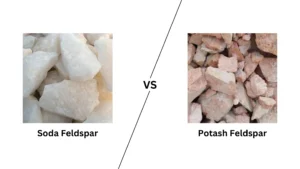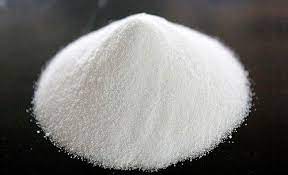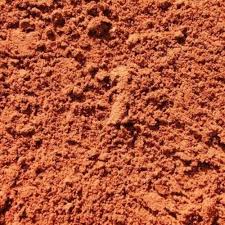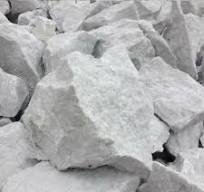
Potash and soda refer to different chemical compounds. Potash is a general term for potassium-containing salts, often used as a fertilizer, while soda typically refers to sodium compounds, such as soda ash (sodium carbonate). Potash and soda feldspar, however, are different types of feldspar, a mineral group, with potash feldspar being rich in potassium and soda feldspar rich in sodium.
- Potash:
This term can refer to several potassium-containing compounds, including potassium carbonate and potassium chloride. These compounds are commonly used as fertilizers to provide potassium, an essential nutrient for plant growth.
- Soda:
In the context of chemistry, “soda” often refers to sodium compounds, particularly sodium carbonate (soda ash). Soda ash is a versatile chemical used in various industries, including glass manufacturing, paper production, and as a cleaning agent.
- Feldspar:
Feldspar is a group of minerals that includes both potash feldspar and soda feldspar. The main difference between these two types lies in their chemical composition: potash feldspar is rich in potassium, while soda feldspar is rich in sodium. These minerals are used in various applications, such as ceramic and glass manufacturing.
- Caustic Potash:
This is another name for potassium hydroxide (KOH), a strong alkaline compound.
- Caustic Soda:This is another name for sodium hydroxide (NaOH), also a strong alkaline compound.


Silica sand, a key component in the glass and casting industries, is primarily a white or colorless material made up of silicon dioxide (SiO2). While “red” silica sand does exist, it’s less common and typically indicates the presence of iron oxide. In the glass industry, high-purity silica sand is crucial for producing clear, high-quality glass. In the casting industry, silica sand is used in foundry applications to create molds and cores for metal casting processes.
- Glass Manufacturing:
Silica sand is a primary ingredient in the production of various glass products, including flat glass, containers, and fiberglass.
- Purity:
The high purity of silica sand is essential for producing clear and high-quality glass.
- Chemical Composition:
Silica sand must have a high proportion of silica (SiO2, typically above 95%) and a low level of impurities, like iron oxide (less than 0.6%).
- Types of Glass:
Silica sand is used in the production of various types of glass, including soda-lime glass, lead glass, and borosilicate glass.
- Foundry Applications:
Silica sand is used in foundry applications for creating molds and cores for metal casting.
- Refractory Properties:
The high refractory nature of silica sand makes it suitable for withstanding high temperatures during metal casting.
- Sand Casting:
Silica sand is used in sand casting, a common method for creating metal parts, especially for larger components like engines or machine components.
- Investment Casting:
Silica sand is also used in investment casting, a more precise casting process, where the sand mold is created around a wax pattern, which is then melted away.
- Presence of Iron Oxide:
Red silica sand typically contains iron oxide, which imparts a reddish color.
- Less Common:
Red silica sand is less common than white or colorless silica sand, as it’s not as ideal for applications where color is a concern.
- Applications:While less common in glass and precision casting, red silica sand may still be suitable for certain applications where color is not a critical factor, such as in construction or water filtration.
What is Limestone Glass Grade ?
1. High Calcium Carbonate Content:
Glass grade lime stone typically has a high calcium carbonate (CaCO3) content, usually above 90%. Calcium carbonate is a vital ingredient in glass manufacturing, as it acts as a fluxing agent during the melting process, helping to reduce the melting temperature and improve the flow properties of the glass.
2. Low Impurity Levels:
Limestone used for glass production should have low levels of impurities such as silica, iron oxide, alumina, and other contaminants. These impurities can adversely affect the clarity, color, and overall quality of the glass. High-purity limestone ensures that the resulting glass is of superior quality and meets the desired specifications.
3. Consistent Particle Size:
Glass manufacturers require limestone with a consistent and controlled particle size distribution. This ensures uniformity in the glass composition and allows for precise control over the melting and mixing processes. The particle size of the limestone is typically tailored to meet the specific requirements of the glass manufacturing equipment and desired glass product.
4. Low Moisture Content:
Limestone used in glass production should have a low moisture content to prevent excessive steam formation during the melting process. Moisture can lead to the formation of bubbles and defects in the glass, compromising its quality and integrity.
5. High Whiteness:
Glass-grade lime stone is often preferred to have a high level of whiteness or brightness.
This is particularly important for glass applications where a clear or colorless glass is desired, such as in the production of flat glass, bottles, and glassware.
Glass-grade limestone is carefully selected and processed to ensure that it meets these specific requirements. It is quarried, crushed, and screened to obtain the desired particle size and purity levels. The high-quality limestone is then transported to glass manufacturing facilities, where it is used as a raw material in the glass production process.
Overall, limestone of glass grade is a specialized form of limestone that is chosen for its high calcium carbonate content, low impurity levels, consistent particle size, low moisture content, and high whiteness. It contributes to the production of high-quality glass products with desirable properties, including transparency, strength, and durability.
Lime Stone Glass Grade is a natural and environmentally friendly product made from lime stone.
It is a versatile and affordable building material that has been used for centuries.
Lime Stone Granules Feed Grade & Glass Grade 0.1-1.2 mm
Lime Stone Granules Feed Grade & Glass Grade 0.1-1.2 mm is a natural product made of crushed limestone. It is used as a feed additive to promote animal growth and as a glass-making ingredient. The granules are available in different sizes, with the most popular size being 0.1-1.2 mm.
At StoneLime, we are proud to offer a variety of lime stone granules that are perfect for both feed grade and glass grade applications. Our lime stone granules are available in sizes ranging from 0.1-1.2 mm, making them the perfect choice for a wide range of uses.
Lime Stone Glass Grade 0.1-1 mm
Lime Stone Granules Glass Grade 0.1-1 mm is a natural and crushed form of lime stone that is used in the manufacturing of glass. This product is screened to remove all foreign particles and then washed to remove dust and other impurities. It is then graded by size and packaged for sale.
As a natural stone, LimeStone has been used for centuries in construction and other applications. It is quarried and then cut into blocks or slabs which can be further processed into a variety of products, including Lime Stone granules glass grade 0.1-1 mm. This size range is perfect for use in a wide variety of applications, from construction to manufacturing to landscaping.

Dolomite powder, a fine powder of calcium magnesium carbonate, is used in both the soap and glass industries. In soap, it acts as a filler, increasing whiteness and weight, and improving consistency. In glass, it functions as a network modifier, helping to reduce the melting point and viscosity of glass-forming oxides.
- Filler and Bulking Agent: Dolomite powder is used to add bulk to soap, making it feel more substantial and increasing the overall weight.
- Whiteness Enhancer: Its high whiteness enhances the appearance of soap, making it appear brighter and more appealing.
- Improved Consistency: Dolomite powder contributes to a smoother, more consistent soap texture.
- Network Modifier:
In glass manufacturing, dolomite (CaO and MgO) acts as a network modifier, disrupting the network of glass-forming oxides (like SiO2).
- Reduced Viscosity and Melting Point:
By disrupting the network, dolomite lowers the viscosity and melting point of the glass-forming oxides, making the glass easier to melt and shape.
- Improved Properties:
The concentration and composition of network modifiers like dolomite can influence glass properties like its transition temperature, density, rigidity, durability, and dimensional stability.
- Dolomite powder used in the glass industry needs to be high-grade with minimal iron and silica content to maintain the desired clarity and uniformity of the glass.
- Dolomite is also used in other industries like agriculture, ceramics, and steel manufacturing.

- Reinforcement: China clay’s unique particle structure enhances stress transfer within the rubber or plastic, leading to improved strength and stiffness.
- Abrasion Resistance: It helps to reduce wear and tear, making the chappals more durable.
- Filler: China clay can be used as a filler to lower costs and improve the workability of the rubber or plastic.
- Applications: It is used in various rubber products like tires, hoses, and footwear.
- Texture:It can help to create a smoother and more consistent soap texture.
- Oil Absorption:China clay’s absorbent properties can help to remove excess oil from the skin, making it effective for oily skin.
- Mild Exfoliant:It can gently exfoliate the skin, removing dead skin cells and promoting a healthier complexion.
- Applications:It can be found in various personal care products, including soaps, scrubs, and face masks



